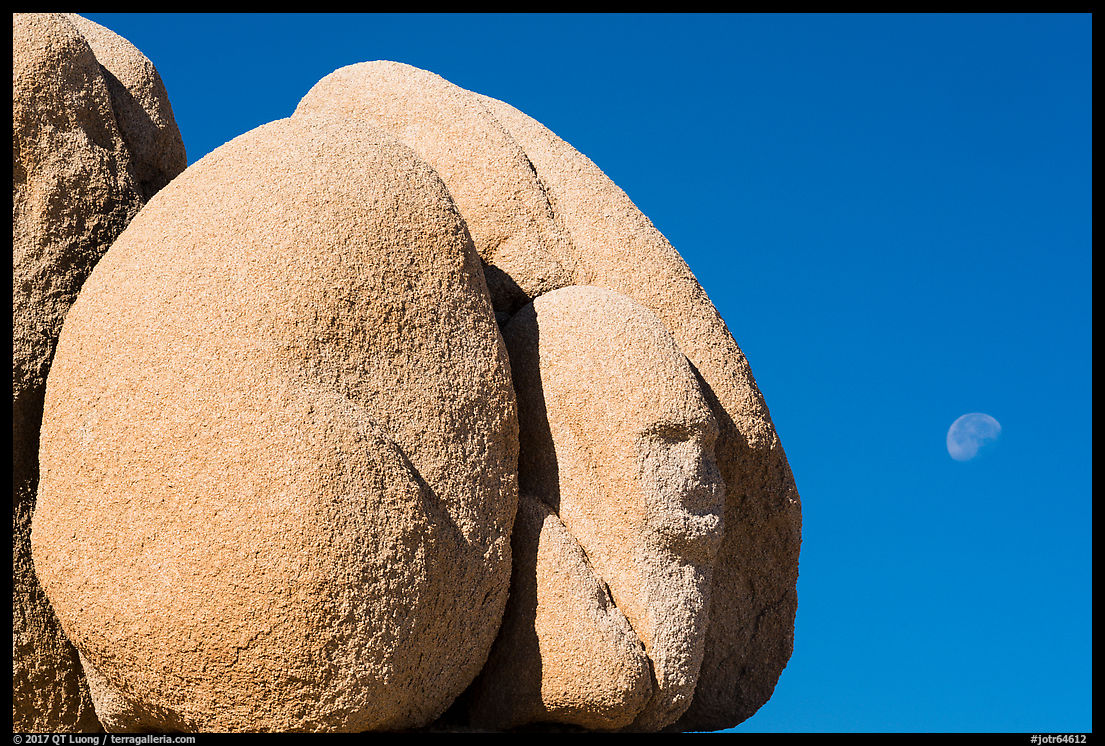Three Unnamed Iconic Rocks, Jumbo Rocks, Joshua Tree National Park
No Comments
Joshua Tree National Park is well-known for the namesake Joshua trees and rounded boulders. The Jumbo Rocks area, home to the largest campground in the park (124 campsites), contains some of Joshua Tree National Park’s most whimsical rock formations. The most interesting are unnamed, and their locations passed from photographer to photographer. You’ve seen the pictures before, and this post tells you how to find three of the those most popular rocks.
The rock formation most well known to the general public is Skull Rock, located east of the Jumbo Rocks campground along the main park road, on its south side. To see it, you can just drive and park on a turnout along the road about 1,000 meters north-east of the campground entrance near a pedestrian crossing, or you can follow the 1.7-mile Skull Rock Nature Trail beginning inside the campground. Skull Rock is well-known because it is named and signed, but there are plenty of other unnamed and unmarked rock formations more interesting to photograph.

The Skull Rock Nature Trail starts across from the amphitheater, located near campsite 93. At the start of this trail, you will find an unnamed boulder pile with spherical marble-like rocks balancing on triangular crisscrossing blocks. First photographed by Ansel Adams in the 1930s, it makes for a far more interesting subject than Skull Rock, with many compositions possible. That wall of rocks faces west and catches the last light of sunset. Below the formation, there is a striking wedged spherical boulder. Repeating the marble shape, it forms an excellent foreground, but the location is tight for multiple photographers.

Standing on the turnout for Skull Road, if you look towards the West, on the other side of the road, you might be able to spot two large twins rounded boulders about 250 meters away. These were the subject of Michael Fatali’s “Sunkissed” and “Fruit of Temptation” and were also photographed by Jack Dykinga in 1989. The relative appearance of those boulders varies with angle, they can be framed with various foregrounds, and the east side presents a Sphynx-like figure, so there are a lot of possibilities. The front of the formation catches the first light of sunrise.


Within the campground, you can also find another photographer’s favorite, the weathered bonsai-like juniper tree framing a pointy balanced monolith, which is close to campsite 19 on Loop C. The light there is best from late afternoon to sunset. Reserving this campsite would be ideal for night photography. I timed my photograph for the moment when the last light from the moon lit the rock. Although the colors are not visible to the human eye, a moonset creates the same warm tones as a sunset, with the bonus of stars sprinkled in the sky.

Besides those three icons, there are many discoveries to be made by wandering around the boulders and following the light.

